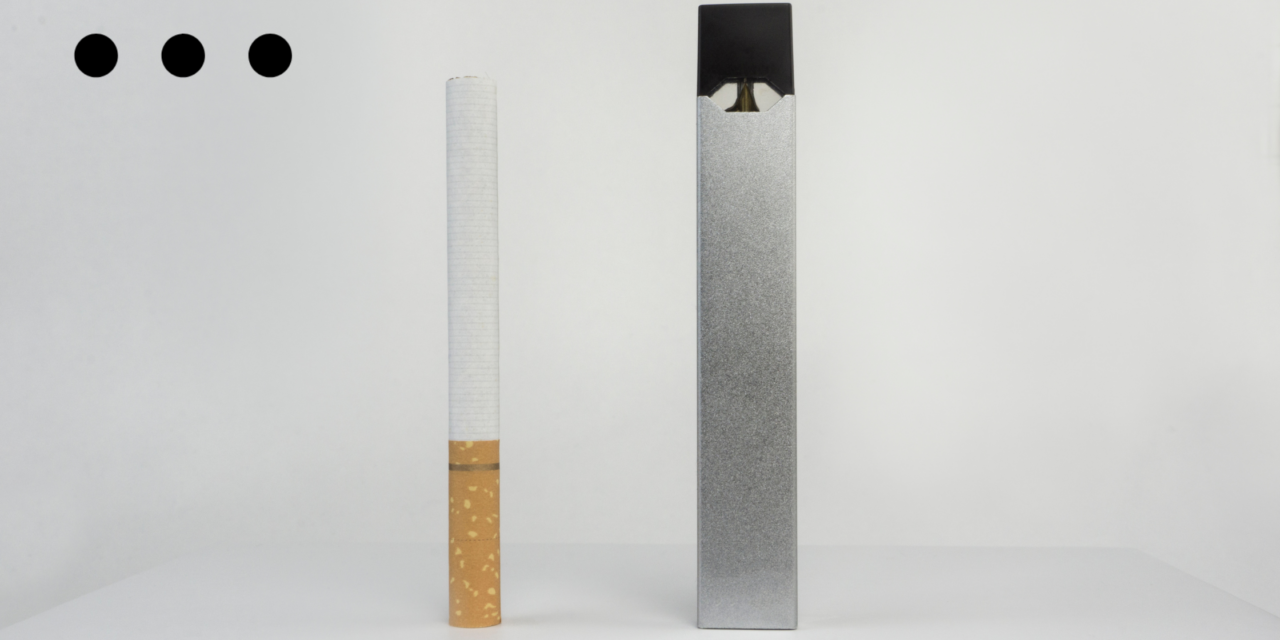Vaping? That’s so 2023. Nicotine pouches are the latest nicotine trend — as well as the source of a rising health concern.
What are nicotine pouches?
At first glance, nicotine pouches look like silica packets or chicklet gum — small, white, and rectangular. These “gum pillows,” or “upper deckies” as they are nicknamed, are housed in equally innocuous containers with surprisingly mundane packaging that looks more like your standard pack of mints or breath-freshening gum rather than the potential source of new drug addiction.
Instead of wicking away moisture or hiding bad breath, these tiny white packets are inserted between the lip and the gums to deliver up to an average of 6 milligrams of pure nicotine per pouch. A smoker will absorb about 1 to 1.5 milligrams of nicotine from a standard cigarette.
One key difference between these and cigarettes is that the pouches are tobacco-free. While this technically makes them less of a health risk, nicotine pouches can still be very dangerous to users.
5 Reasons Why Nicotine Pouches Are Dangerous
Higher nicotine concentrations than cigarettes
The nicotine content in these pouches varies depending on the brand, but some are in line with having just as much, if not more, nicotine than a cigarette. ZYN nicotine pouches, a popular brand with nearly 300 million views on TikTok, come in increments of 3 and 6 milligrams of nicotine. Velo brand pouches range from 2, 4, and 7 milligrams of nicotine per pouch, and the nicotine-pound brand On! is set to release new higher-strength pouches of 6, 9, and 12 milligrams.
Hard to spot
Both vapes and pouches can boast of being tobacco-free nicotine products. However, one is much more discreet than the other. Being smokeless, nicotine pouches can be used virtually anywhere and remain undetected, making it easy to take in nicotine in places where smoking is prohibited. Pair this with their high potency contents, and you’ve got a recipe for a future nicotine habit.
Increased cancer risk
Despite the pouches not containing tobacco or giving off all sorts of carcinogens through smoke inhalation, nicotine itself is a major cancer-causing substance. In the body, nicotine creates metabolites that increase cell division, increase DNA mutation likelihood, and accelerate tumor growth. Its consumption is linked to a number of diseases, including lung cancer, gastrointestinal cancer, pancreatic cancer, and breast cancer.
Hurts brain development in adolescents
Nicotine pouches have a variety of flavors like “cucumber lime” and “bellini” that have made these products popular among young people and even children as young as middle school age (a study found that nicotine pouch usage is actually higher among adolescents than older adults). However, nicotine has acute effects on young people and can negatively affect both brain development and behavior.
Studies have shown that in a developing brain, nicotine can harm the parts that control cognition, focus, mood, and impulse control. These effects can be especially devastating since young users don’t have any nicotine tolerance and thus have a heightened nicotine sensitivity and experience its effects more sharply.
Fewer FDA regulations
The most concerning aspect of nicotine pouches is the lax federal regulation. Since they do not contain tobacco, nicotine pouches are regulated far less strictly than cigarettes, e-cigarettes, or other tobacco products. Aside from basic age and marketing restrictions, the Federal Drug & Food Administration does not regulate nicotine pouch contents; neither the amount of nicotine in a single pouch nor the presence of potential contaminants like metals or nitrosamines.
Additionally, there’s been very little research into nicotine pouches’ long-term side effects. The tip of the iceberg is the mouth and gum irritation, oral sores, and nausea associated with repeat pouch use.
Nicotine pouches can cause addiction
Although these smokeless nicotine products are touted as healthier smoking alternatives to traditional e-cigarettes, nicotine pouches are not officially approved for such use by the FDA and should be used with caution. They can still result in numerous cancers and other health issues, and their convenient packaging makes it frighteningly easy to consume a dangerous amount of caffeine.
Considering how addictive nicotine is, it’s a dangerous combination. Nicotine is so addictive that the U.S. Surgeon General likened it to being as or more addictive than cocaine or heroin. And while it’s often assumed that only the heaviest users of a drug are at risk of addiction, that’s not the case with nicotine. A recent study found that two-thirds of “light” smokers, those who smoke four or fewer cigarettes a day, widely considered to be below the threshold of causing addiction, exhibited signs of nicotine dependence.
If you or a loved one is struggling with a drug addiction of any kind, get help today and find a drug rehab treatment center near you.

